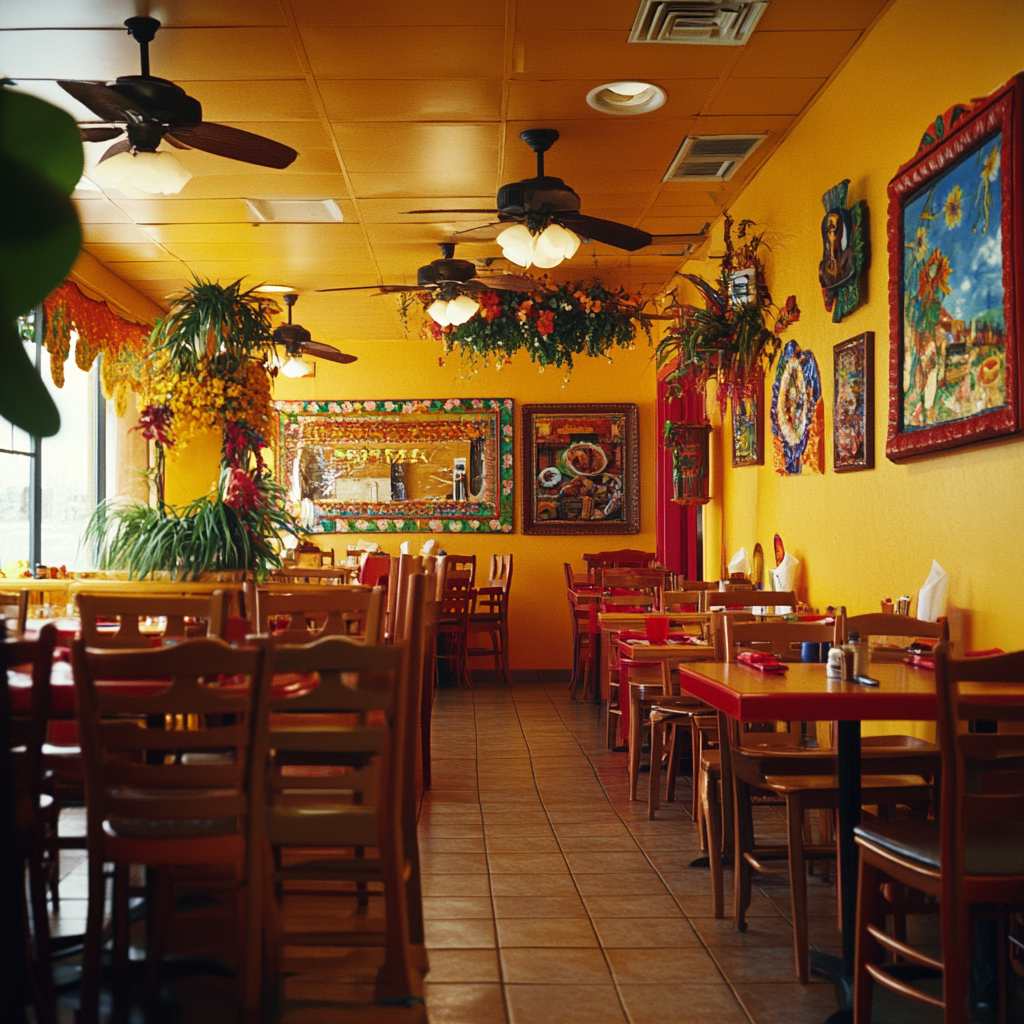Give consumers new
ways to live boldly.
After years of playing it safe, staying in bed, and ordering comfort foods from delivery services, consumers told us they’re ready to get out and try some new foods and experiences again. Indeed, “getting out of the house” came in second — just behind “get healthy” — when we asked about consumers’ top goals for 2025. But it’s going to take some bold ideas to do it. Safe, ho-hum options just won’t cut it — and they won’t break through the noise. That can mean bold marketing campaigns, bold flavor profiles, bold colors and design, and bold dining and retail concepts. Nobody wants to live a humdrum life — how can you help consumers be bold in 2025?
What IS bold to consumers?
Which foods and flavors do considers equate with being bold? Spicy comes out on top, with nearly half of consumers saying they’re bold, while sweet and spicy flavors come in second place. Surprisingly, sweet flavors were called bold by a third of consumers, even more than funky or bitter flavors. Can you get a little bolder with the dessert menu?
30%
of consumers say bold flavors make them want to experiment more and try more new things
27%
of consumers say bold flavors make them feel more excited
39%
of consumers say trying bold flavors makes them more open to trying other things
32%
of consumers say bold flavors help them understand other cultures better
How do consumers define bold eating experiences?
-
40% of consumers say they define bold eating as “trying new and unfamiliar dishes,” their top choice. How can you introduce them to these new experiences and help them enjoy more bold, memorable experiences in a way that is approachable?
-
Over a third — 34% — of consumers say combining flavors that don’t normally go together or that “seem weird” is how they define bold eating. These types of combos have been trending on social media.
-
Likely overlapping with trying new and unfamiliar dishes, 30% of consumers specifically said that trying things they’re worried they won’t like as being bold. As we see below, many consumers are happily surprised when they like something that they were unsure of — and those experiences were particularly memorable. How can you give them that experience through your brand?
-
Going against the grain is hard, which is why 29% of consumers consider eating foods that others might call “weird” a bold food experience. Some consumers take pride in ordering and eating foods others may cringe at — how do you cater to them?
-
Nearly 1 in 4 — 24% — of consumers say global and world cuisines in general offer up a bold eating experience. While that may differ from cuisine to cuisine and dish to dish, offering up global dishes can be an easy way to give consumers a bold dining experience.
Consumers Share the Food Experiences That Challenged Them
“A chocolate chip cookie made out of a banana. It challenged what I preferred because it tasted good and it was healthier than a regular chocolate chip cookie.”
“In March 1874 (I was 16 at the time) my family ate dinner at a restaurant named ‘The Whale’s Tail’ in Lahaina, Maui. I ordered frog legs, mostly so I could hear my sister say, ‘Ewww!’”
“I would never eat Chinese food growing up. Wouldn’t even taste it. I went on a date in college. The guy took me to a Chinese restaurant. I was too shy to tell him I didn’t like Chinese food. I ordered moo goo gai pan and I’ve been hooked on Chinese food ever since.”
“A smoothie that contained strawberry and beets. It was a lovely color and flavor, more so than I expected. It encouraged me to try mixing more fruits and vegetables in unique combinations.”
“I come from a Latino household, so our regular meals are usually rice with beans and chicken. A few years ago I was offered deer. I was in complete shock to try it, but it wasn’t bad at all.”
“I once tried durian, a fruit with a strong, pungent aroma and creamy texture that I’d normally avoid due to its intense smell. Surprisingly, beneath the initial shock, I found a sweet, custardy flavor that was unexpectedly enjoyable despite my usual aversion to strong-smelling foods.”
“I discovered an Asian market close to where I live. They have so many new foods I have never seen before. Quail eggs are a game changer.”
“I tried octopus when we were in Mexico and I was pleasantly surprised. It was delicious and not rubbery like I expected. It made me more willing to try unusual foods.”
“I regularly try foods from other countries through a subscription-based service so that I can experience foreign foods. I’ve been pleased at many of them because there are many we don’t have here so I never would have gotten to taste them.”
“As a kid I remember that Hot Sam’s, the pretzel place at the mall, had cherry lemonade with cherry syrup. It was the first time I had ever had a fusion drink and it blew my mind.”
“I just recently tried guacamole for the first time. I don’t usually eat too many things of a green color and won’t usually try something if I’m too put off by the looks of it. But my new girlfriend ordered it for an appetizer when we were at a sports bar on vacation in Vegas last month. I must say I wish I would have tried it many years ago. I love it, even though the color and texture go against what I usually like.”
“I tried a smoky mezcal. Its bold, earthy flavor completely shifted my view on spirits!”

Fear holds consumers back from being more adventurous with foods and flavors.
40% of consumers said fear of wasting money kept them from being more adventurous, while 38% said they were afraid they wouldn’t like a dish or item.
What are some tactics you can use to you help consumers conquer these fears and be more adventurous?
Which of these restaurants would you like to visit?
When we used AI to create a number of restaurant concepts, the more colorful restaurants that featured bolder colors and light tended to score better than the more stark, muted, dark, or minimalist designs. More than twice as many consumers wanted to visit the casual Mexican concept with bright yellow walls and colorful paintings than wanted to visit the minimalist all-white space.
-

42%
-

41%
-

36%
-

35%
-

30%
-

29%
-

28%
-

26%
-

26%
-

20%
Ten bold thought-starters for the year ahead
Are there any ideas you abandoned in the past because you thought they might scare your core consumer away? How can you revisit them?
On a scale of 1 to 10, how bold is your brand? How can you be a little bolder?
How does your audience define boldness? How can you design foods, dishes, and experiences around that definition?
Consumers are often introduced to new options through friends or family members — how can you harness that word of mouth to capture new customers?
Consumers say spicy flavors are bold — but they’re everywhere. How can you leverage heat in a new way?
Consumers also say sweet flavors can be very bold. What’s the boldest sweet option — a breakfast item, drink, dessert — that you can imagine?
What are two flavors that you would never put together? Can you make them work?
What are some tactics you can use in your marketing that are a little less corporate and can cut through the noise?
Bold colors and design are taking over — how can you leverage them in dishes, products, packaging, decor, etc.?
Fear of wasting money and not liking a dish hold consumers back from trying new, bold things. How can you erase those fears?

